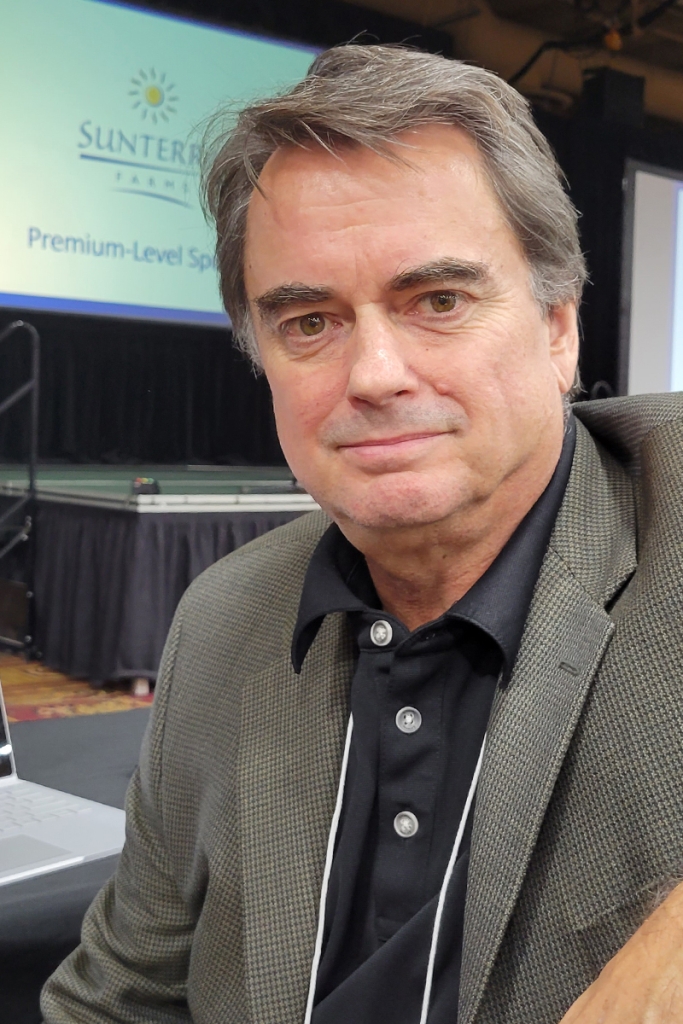
Elation after a great response to the 2022 Red Deer Swine Technology workout has deflated a bit with news that the facility may not be available for future workshops.
Held online through the COVID-19 pandemic, RDSTW returned to an in-person event on October 19, packing the Cambridge Hotel’s exhibition hall with 208 participants and adding a few newcomers to the sponsors’ exhibits around the perimeter. The number of presentations was reduced by one, allowing more time for coffee breaks and lunch. Tweaking the format gave more time for people to chat between sessions and improved the opportunities for exhibitors to converse with their target audience.
Organizers capped the event with the introduction of a new logo, updating the fiery outline of a pig on a black background with a graphic and text. Committee Chair Alastair Bratton said in his introduction that the logo is “new and fresh,” while reflecting the desire to maintain the program’s relevance through continual updates.
RDSTW is a project of Alberta Pork, operated by Industry Programs Manager Charlotte Shipp with a volunteer committee chaired by Alastair Bratton, Calgary-based production manager for Olymel.
Prior to the pandemic, annual workshops had been held at Westerner Park, then moved to the Capri Hotel (now the Cambridge), and then returned to Westerner Park. Shipp and Bratton both said in conversation with Prairie Hog Country that the Westerner’s facilities were a less comfortable fit, so they were pleased to return to the Cambridge for 2022.
However, that return is now at risk as owners of the hotel lay plans to move a casino out of Downtown Red Deer and build on the Cambridge site. The hotel and casino both belong to financial enterprises of the O’Chiese First Nation, a Saulteaux band located northwest of Rocky Mountain House.
Provincial and municipal approvals have now been granted for the move, although the timeline for construction and relocation of the casino have not been established, said Bratton. It is clear, however, that the facility will not be available for RDSTW once the project is complete. There may be an opportunity to return in 2023, but the search has now started for a new home. Returning to Westerner Park is an option, but the committee hopes to find something with a warmer ambience while big enough to keep exhibitors in the same room as the presentations, he said.
The 2022 version was wrapped around a theme of economic viability, opening with a talk by Ben Woolley, Director of Operations for Sunterra Farms. Woolley and Frank Novak, managing director of Alberta Pig Company and a former chair of Alberta Pork, worked together to create the presentation on knowing and managing costs of production.
Small details can make a huge difference in a farm’s profitability, said Woolley. He worked through those details, showing how to target various factors that influence cost, such as the number of pigs weaned per sow. Extra pigs may sound wonderful, but the formula placed in front of the participants showed that the costs of those extra pigs can put a $50,000 hit against the farm’s annual profit.
“Physical production efficiency has a major impact on the economic efficiency. What you guys do in the barn has a massive impact. We’ve got to look at it from a global scale in missing targets, and then we’ve got to drill down to individual factors,” said Woolley.
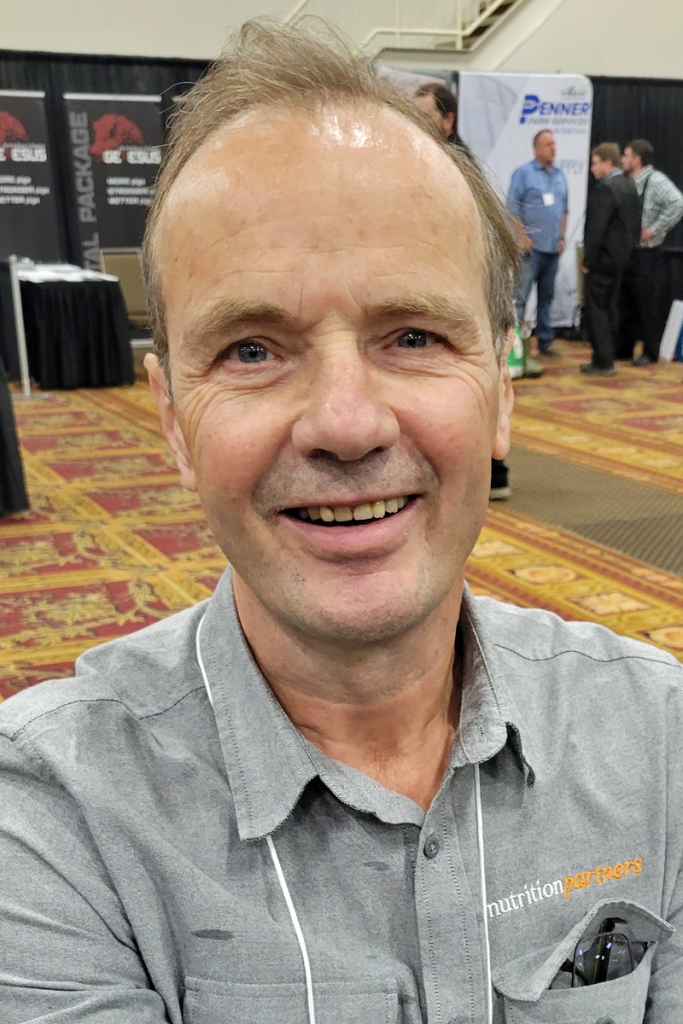
Next up was Jan Geurts, swine nutritionist at Nutrition Partners, investigating the hidden costs of cheap feed. Geurts looked at the net return on investment weighed against the costs and benefits of chosen rations, including gilt development and maintaining sows. Within his presentation, he showed that developing gilts affects lifetime productivity. The best return on investment is achieved by focusing on gilt development, and then culling sows after the fifth through ninth parity.
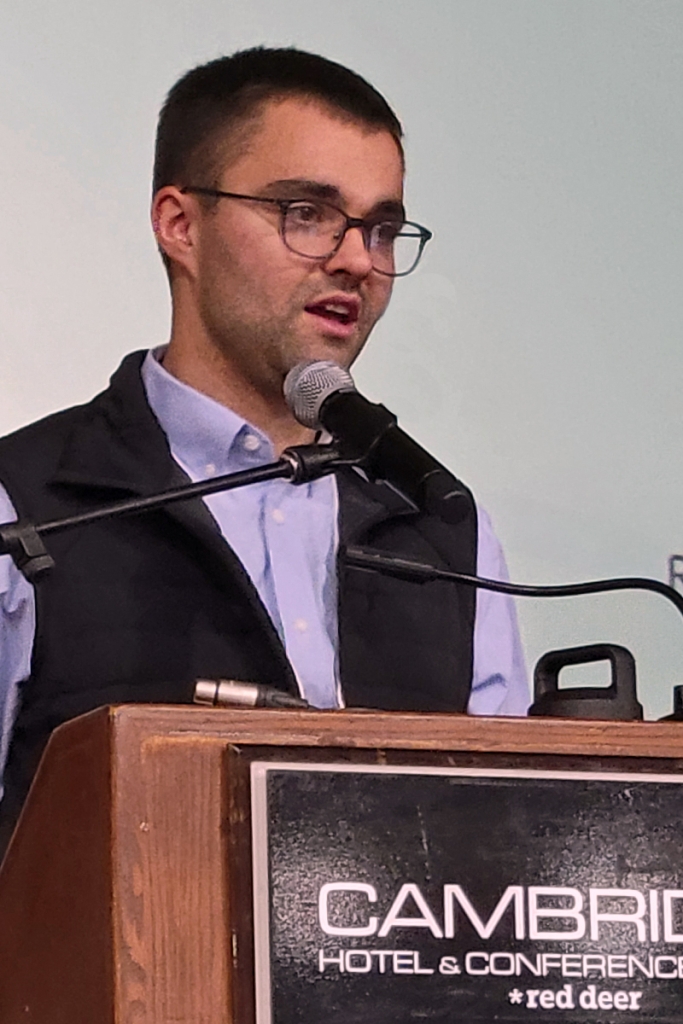
Veterinarian Cordell Young with Precision Veterinary Services then took the stand to discuss internal biosecurity through managing diseases.
“With internal biosecurity, we’re not getting rid of disease from the farm. We’re just preventing the infections from happening early enough that (those measures) have more significant impact. An example of that would be a disease that would happen early in the nursery. If we can push that off a couple of weeks, these pigs are going to be on feed, they’re going to be already established after they were weaned, and they’ll handle that disease a lot better.”
He offered an outline for measuring the success of an internal biosecurity system:
*Visual inspection for general cleanliness,
*Monitor performance to improve management of scours, reduction in swollen joints, lowered sow mortality and higher weaning weights,
*Judicious use of antimicrobials,
*Use of technologies such as ATP based and CleanTrace swabs,
*Diagnosis for presence and prevalence of disease.
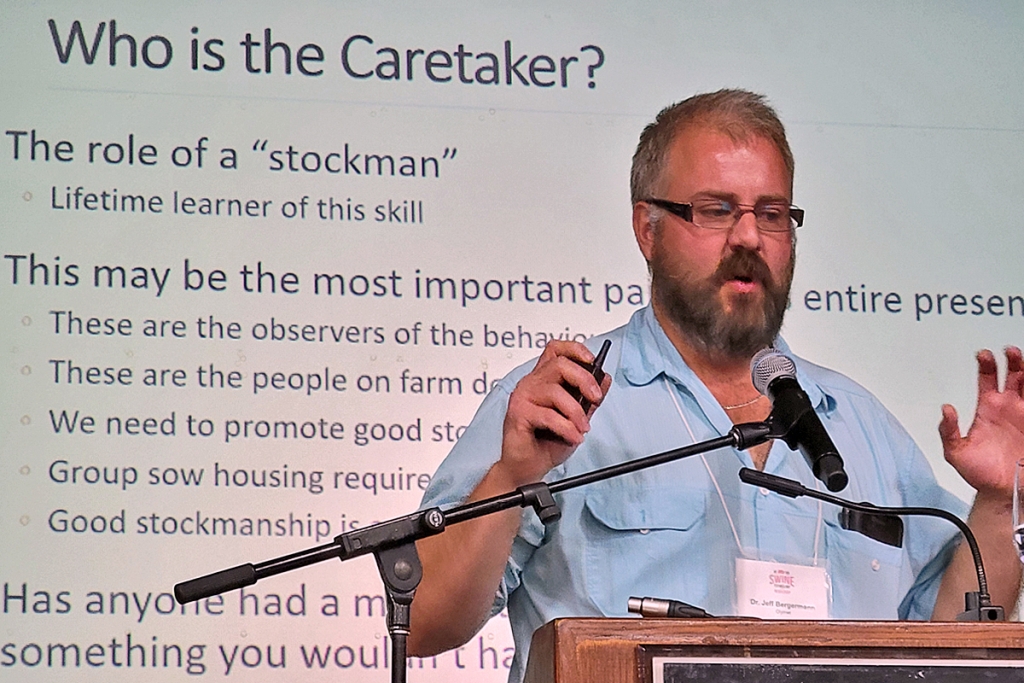
Olymel corporate veterinarian Jeff Bergermann followed up with a presentation on how to detect and deal with abnormal behaviour in sows, including an outline of normal behaviours. He stressed that the stockman is the most important link in the chain.
“It’s just so crucial to what we do. When you see someone who is a master at their trade or a master at their craft, it’s pretty awesome.”
Bergermann described stockmanship as an art, with those caring for grouped sows requiring an especially elevated level of skill.
He went on to discuss abnormal behaviours, such as excessive aggression or gilts ignoring their piglets, and recommended ways of dealing with them. Pain control is important, and sometimes putting some bigger piglets on and giving a shot of oxytocin will do the job. Other times, that girl just has to go.
“If we keep in mind that the behaviour that we’re seeing is the result of the situation the animals are in; it certainly helps us to look at what we need to change to help remove behaviour that we consider undesirable to desirable behaviour.”
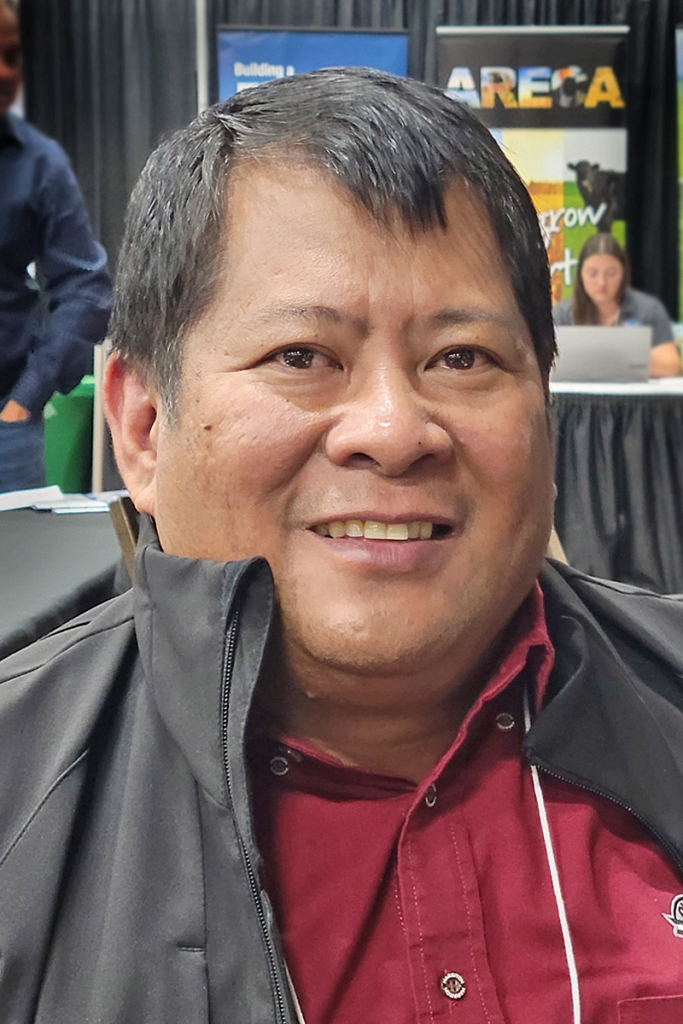
Ariel Vargas, production manager for Olymel at two nursery and two finishing sites totaling 24,000 spaces, showed how technology and data analysis are used to improve production and save costs in the barn.
He put up a circle, showing five key components rolling together, including pigs, people, technology, cost efficiency and business productivity.
“Without people, without the knowledge of the people, the technology doesn’t work. Make sure that all the staff are engaged and that everyone is on the same page,” he said.
“My job is to empower my staff to make sure that they learn what I expect.”
Vargas said he prefers hands-on training, because people don’t learn as well when they’re shown a process or technique as they do when they use it themselves.
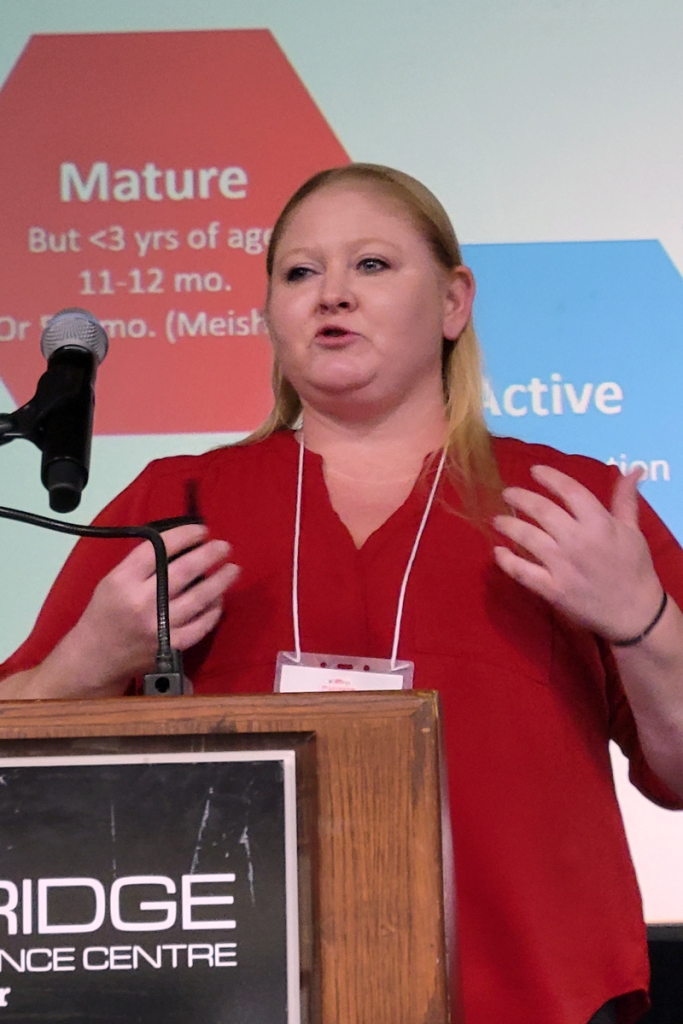
Kendall Weger, technical services specialist in reproduction at PIC, then shared her insight on best practices and routines for artificial insemination.
Weger said a good program focuses on the basics: Heat detection and boar power; insemination process, and semen management.
She offered a number of recommendations for how to select and manage boars, the correct ratios for boars to sows and boars to gilts, and where to house boars and how often to replace them. She then addressed heat detection, timing of breeding and breeding procedure.
Successful AI requires diligence, including boar exposure and heat detection, with consistency being the key to achieving world-class performance, said Weger.
“The high performing farms do things right every single day.”
The 2022 Red Deer Swine Technology Workshop wrapped up a few minutes early, with a talk by Boehringer Ingelheim veterinarian Gail Cunningham, who offered advice on using the company’s water-based vaccines.
Overall, the updated format with fewer presentations and longer breaks worked quite well, said Bratton. The only issue was that so many of the participants left during the afternoon coffee break. The committee plans to keep the longer breaks and is exploring ideas that will encourage people to stay for the full session, he said.
The six presentations outlined above are now publicly available at albertapork.com on the Swine Tech page. It’s not the same as being there but does offer a closer look at the large volume of data presented to the workshop. •
— By Brenda Kossowan





